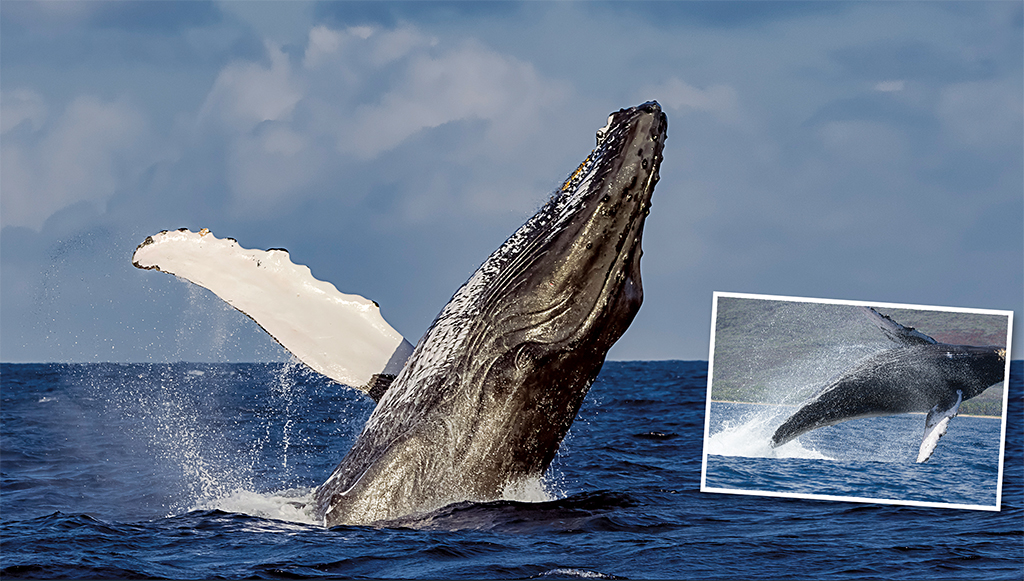Avoid using an extremely tight frame or your shots could end up like this (see photo in inset).
THE MAGICAL QUALITIES exhibited by whales capture our hearts and minds despite the fact that most divers have not seen one underwater. Just a glimpse sets our imaginations free and sends adrenalin coursing through our arteries. Of course, if you are a photographer, a whale sighting is likely to make you hustle to grab your camera.
Whales display at the surface in numerous ways, with breaching being the most spectacular. It’s unlikely you’ll “get your shot” if a whale only breaches once. However, it is not uncommon for whales to breach several times in succession. The humpback pictured here breached twice. Using the techniques that follow, enabled me to capture the accompanying photograph.
When out on a whale watching boat trip, I take a camera set up with a telephoto lens. Before boarding, I set the camera’s shooting mode to “shutter priority.” This enables me to set a fast shutter speed, thus helping me capture a sharp image by “freezing” the action. At a minimum, I set my shutter speed to 1/1250th of a second.
I also set my camera to shoot as many frames per second as possible.
Selecting the preferred focusing option can be challenging. Not all cameras offer the same possibilities, so you might need to select a different focusing method than I use. I set my camera and lens to continuously focus on the subject as long as I am depressing the focusing button. Of equal importance, I set the camera to focus by using a “block of focusing points” in the upper middle of my frame. I suggest avoiding “single-point focus” or an extremely large focusing area. A single point might lack the contrast or movement detection needed to “lock focus,” and too wide of a focusing area can cause a lens to focus on the water in the foreground instead of the subject.
When I will be at sea shortly after sunrise, I increase my ISO to help me work in low light.
Then, I keep my camera system at my side and ready to shoot when an opportunity arises.
I use a telephoto zoom lens, and experience has taught me not to try to compose an extremely tight frame, especially for my initial shots. Not knowing exactly which direction a breaching whale will be moving, I try to leave some room around the edges of my frame to make sure I don’t accidentally cut out part of the whale in my shot. The extra room also allows me to “level” the horizon during editing if need be.
Even when I miss a previous, breach, I quickly focus on the surface water where the whale landed. This sets my focus close to where the whale is likely to breach again — if the whale breaches again.
Lastly, I brace myself, steady the camera, have my trigger finger ready and I wait.






